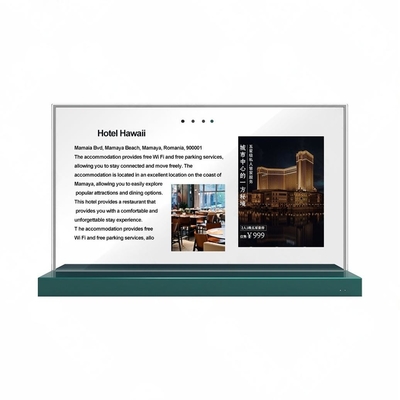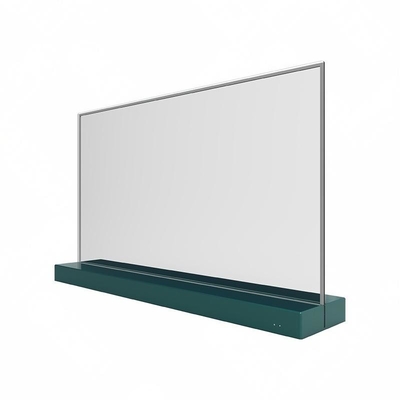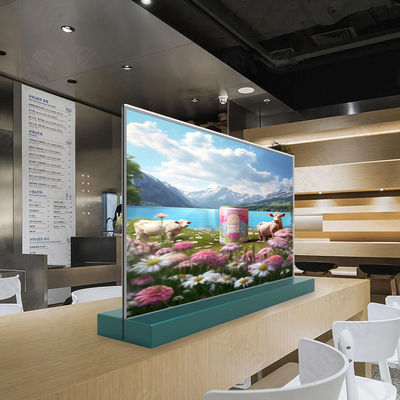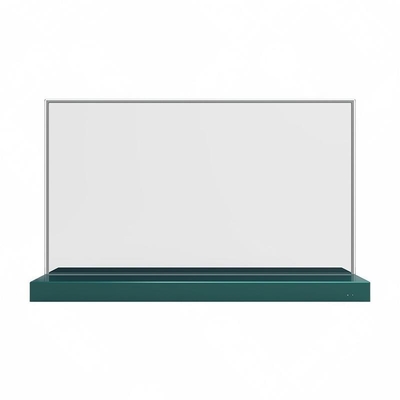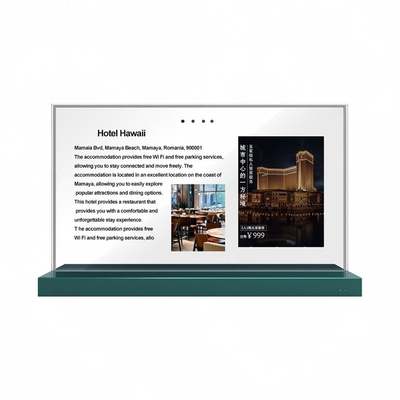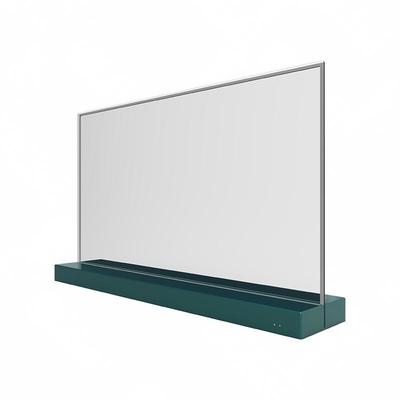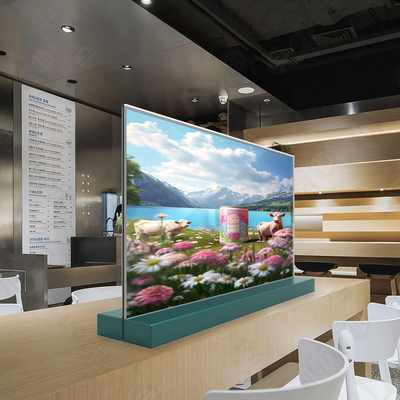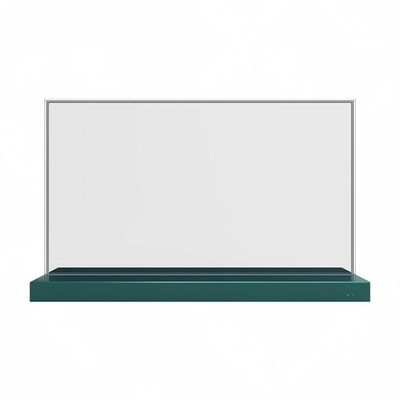-
LCD TFT Display
-
Touch Screen TFT Display
-
Round TFT Display
-
TFT Color Display
-
AMOLED Display Module
-
Micro OLED Display
-
Bar Type TFT
-
Square TFT Display
-
High Brightness LCD Display
-
COB LCD Display
-
Sunlight Readable TFT
-
UART TFT Display
-
LCD Display Module
-
PMOLED Display
-
Epaper Display
-
LED Digital Display
-
Capacitive Touch Panel
30inch OLED Transparent Screen Full-body Splicing Model 1366x768 Resolution 180-600 Nits Oled Transparent Oled Panel

Contact me for free samples and coupons.
WhatsApp:0086 18588475571
Wechat: 0086 18588475571
Skype: sales10@aixton.com
If you have any concern, we provide 24-hour online help.
x| Display Technology | Transparent OLED Panel | Name | Oled Panel |
|---|---|---|---|
| Size | 30 Inch | Display Resolution | 1366*768 |
| Brightness | 180-600cd/m2 Antomatic Adjustment | Display Mode | Normally Transparent |
| Material | Tempered Glass + Sheet Metal | Dimensions | 681*424*147(mm) |
| Warranty | One - Year Quality Guarantee For After - Sales Service | ||
| Highlight | Full-body splicing OLED transparent screen,30inch OLED transparent screen,1366x768 OLED transparent screen |
||
30-inch OLED Transparent Screen - Desktop Tiling Model The 30-inch OLED transparent screen -
desktop model is a display with a transparent feature and innovative design.
Here's a detailed introduction to the product:
Transparency: This OLED transparent screen boasts an impressive 45% transparency,
allowing viewers to see through the screen and catch glimpses of what lies behind it,
thereby adding more layers and depth to the displayed content.
This level of transparency not only provides a unique visual experience but also opens up a new creative world that traditional digital displays cannot offer.
Image Quality: The screen measures 30 inches in size and uses OLED panel technology.
It has a contrast ratio of 135000:1, a resolution of 1366x768,
and an aspect ratio of 16:9. It can provide clarity sufficient for reading
![]()
A: Product Parameter
![]()
![]()
![]()
B:Product Picture
![]()
![]()
![]()
C:Drawing and Pin Definition
![]()
D: Oled Product Knowledge
OLED Advantages:
OLED sets are lighter and thinner than LCDs , high contrast, high color saturation, lower consumption
OLED Disadvantages
AMOLED is extremely expensive than LCD and TFT, lifetime is shorter than LCD and TFT
E: Company Information
Huaxin Advantage:
1. factory base located at inland city which has cost effective
2. most advanced new equipment which can keep quality stable
3. most processes using fully automatic equipment which has effeciency and stable quality
4. professional engineers and production leaders who works in lcd field for more than 20 years
5. self design for customized product
our certificates
1.ISO14001/
2.ISO9001/IATF16949
3.SGS of LCD module
- Huaxin Technology (Enshi)Co.,LTD
- Hubei.Enshi
- Date of foundation:2009
- high technology enterprise mainly work on research and development, producing and sells LCD,LCM,TFT,backlight,OLED
- LCD includes: VA,TN, HTN, STN, FSTN, CSTN and other series
- LCM includes: COB,TBA, COG,TP,LED backlight and other series
- register capital:twenty million
- current staff:500+
- RD accounts for 10%
- QC accounts for 15%
F: Production Capacity
| Annual Production Capacity |
2021 (Current) | 2022 (Goal) | 2023 (Challenge) | 2024 (Challenge) | 2025 (Challenge) | Remark | ||
| LCD Producton Capacity |
4.5 | 9 | 9 | 9 | 9 | Unit:thousands of logarithms/Day |
||
| LCM Producton Capacity |
70 | 150 | 300 | 450 | 450 | Unit:Thousand piece/Day |
||
| Backlight Producton Capacity |
100 | 200 | 300 | 500 | 500 | Unit:Thousand piece/Day |
||
| OLED Producton Capacity |
10 | 20 | 30 | 40 | 50 | Unit:Thousand piece/Day |
||
G: Product Application
1.safety box &instrument
2.lock&smart home
3.transmitter&watch
4.watch&adio
5.collimator&navigator
H: AMOLED Display Characteristics
1.Self-E missive Pixels:
2.Contrast Ratio:
3.Color Accuracy and Vibrancy:
4.Viewing Angles:
5.Power Efficiency:
6.Thinness and Flexibility:
7.Response Time:
I:How does the power efficiency of AMOLED displays compare to other display technologies?
1.Power Consumption:
- AMOLED displays consume power on a per-pixel basis, meaning that pixels that display black or dark content consume very little power, while pixels displaying bright or white content consume more power.
- LCD and LED displays, on the other hand, require a constant backlight that consumes power regardless of the displayed content.
2.Content Dependency:
- AMOLED displays are more power-efficient for content with a lot of dark or black areas, as the individual pixels can be turned off to save power.
- LCD and LED displays consume a relatively constant amount of power regardless of the displayed content, as the backlight remains active.
3.Brightness Control:
- AMOLED displays can dynamically adjust the brightness of individual pixels, allowing for better power efficiency in low-brightness scenarios.
- LCD and LED displays typically have a fixed backlight brightness, which can result in higher power consumption even when the display content does not require maximum brightness
4.Display Size
- AMOLED displays tend to be more power-efficient for smaller display sizes, as the power consumption scales with the number of pixels.
- Larger LCD and LED displays may require more power-hungry backlights, potentially reducing their power efficiency compared to AMOLED displays of the same size.



